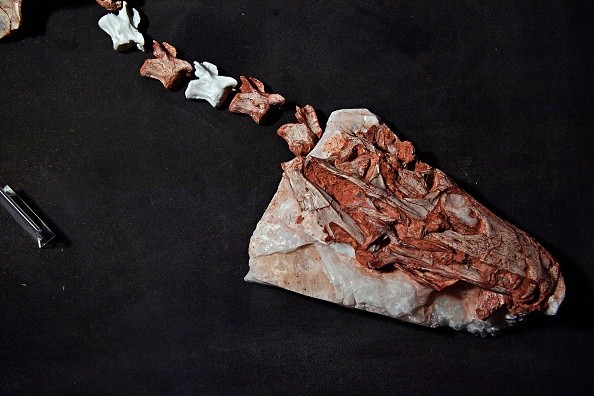A new study suggests that climate change can also affect dead animals. 183 million years ago, rising global temperatures and rapid climate change may have caused fossilization conditions in the oceans that play a major role in preserving the soft and delicate parts of dead marine animals.

Similarities in Fossil-rich Marine Deposits
Squid-like vampyropods with ink sacs, ornate crab claws, and fish with preserved gills and eye tissue are among the fossils found. The fossils came from a variety of marine settings, but they were all preserved in the same way. Such fascinating fossils could be linked to the Earth's climate, according to geochemical study.
The findings were reported in the journal Scientific Reports.
UT Jackson graduate student Sinjini Sinha, the study's primary author, stated, there was no clue when he started the research. It piqued his interest as to how such excellent preservation came to be.
An intricate chemical process occurs within the tissues of a dead organism to create an immortal fossil. The authors used a scanning electron microscope outfitted with a tool to detect chemical components in minerals to study fossil specimens from different angles, as per Phys.org.
Posidonia Shale in southern Germany, Strawberry Bank in southern England, and Ya Ha Tinda in Alberta, Canada, were the origins of the fossils. Phosphorus was the predominant element in all of them.
It was a bit unexpected to see so many similarities, says co-author Rowan Martindale of the Jackson School of International Affairs.
Presence of Phosphorus in Fossilized Marine Skeletons
The presence of phosphorus in fossilized fish skeletons isn't a surprise. Even in tissues that don't typically contain phosphorus, such as crustacean exoskeletons and vampyropod tissue, it indicated that the phosphorus minerals were derived from their environment, according to Science Daily.
It's not uncommon for low quantities of phosphorus to be found in marine sediments, though, according to co-author and Cornell College assistant professor Drew Muscente (a former Jackson School postdoctoral researcher).
It's unusual to find phosphorus in sedimentary rocks, he explained. Except in extreme circumstances, it is rarely buried in considerable volumes.
An influx of greenhouse gases from volcanic eruptions during the Early Jurassic, according to the researchers, may have been the catalyst for a time of intense and rapid climatic change, which resulted in greater rainfall and the loss of phosphorus-rich material from rocks on land.
How Climate Change Contribute to Fossil Preservation
Today's climate change is also diminishing ocean oxygen levels, but Martindale said it will be millions of years before anybody can predict whether or not this would lead to an increase in the abundance of remarkable fossils.
Harvard University research associate Javier Luque, who was not involved in the work believes it is relevant because it implies that historical temperature change may have aided facilitate fossilization in a number of different habitats.
According to the lead author of the study, it's possible that global events in the past could have set the stage for the exceptional preservation of fossil-rich marine deposits around the planet, regardless of their location, lithologies, habitats and depositional settings.
Researchers from the University of Missouri, the Bath Royal Literary and Scientific Institution, and the Stuttgart State Museum of Natural History all contributed to the paper as co-authors.
Related Article : Tuataras: Fossil Discovery Reveals Secrets About the Mysterious Reptile
For more news, updates about fossils and similar topics don't forget to follow Nature World News!
© 2025 NatureWorldNews.com All rights reserved. Do not reproduce without permission.





